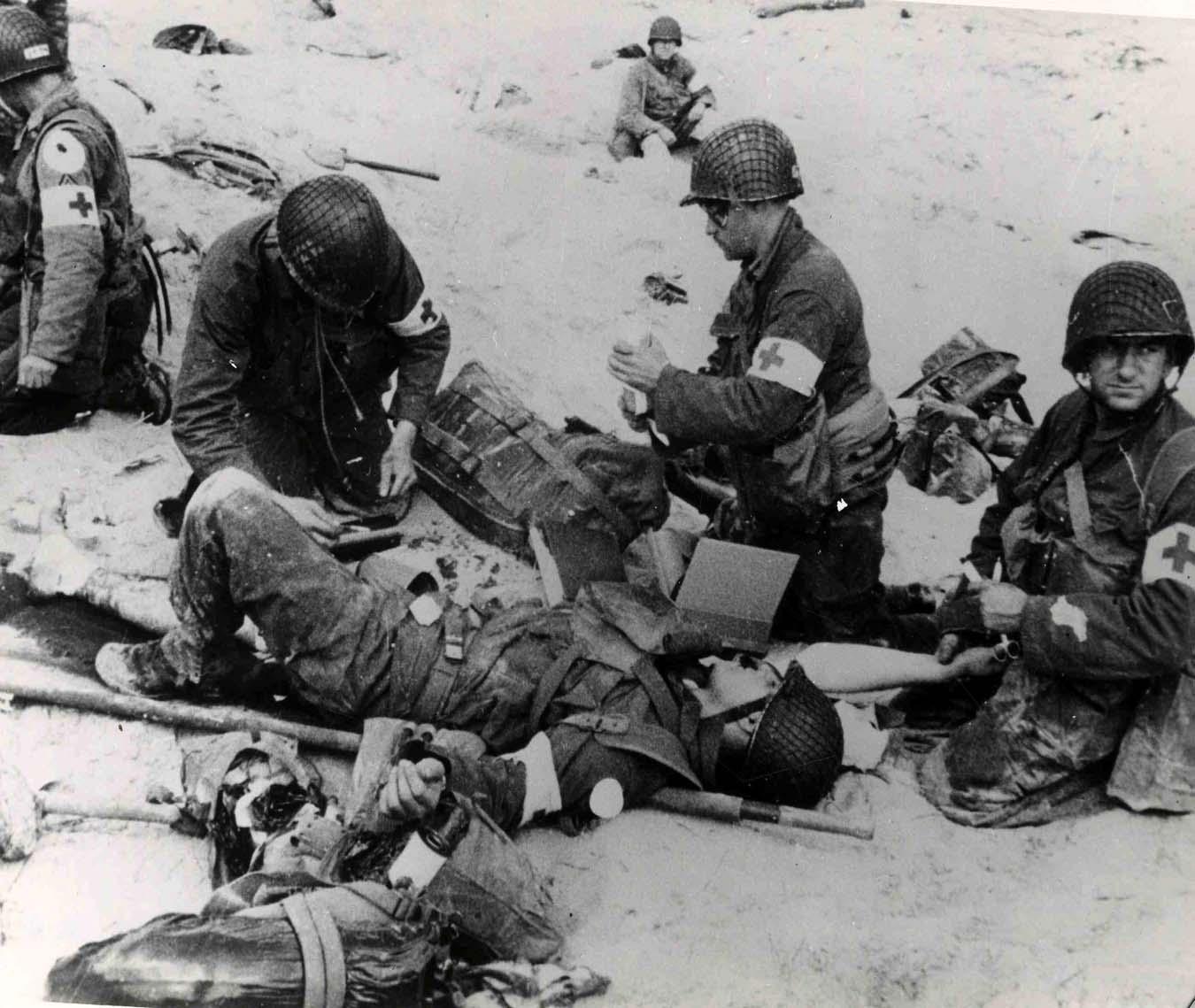South Dakota Physician Led Troops Ashore at Utah Beach
 Former psychiatrist at the VA Hospital in Sturgis, South Dakota, Capt. Walter E. Marchand was battalion surgeon for the 4th Infantry Division when it stormed ashore at Utah Beach on D-Day, June 6, 1944. He was awarded the Silver Star for heroism.
Former psychiatrist at the VA Hospital in Sturgis, South Dakota, Capt. Walter E. Marchand was battalion surgeon for the 4th Infantry Division when it stormed ashore at Utah Beach on D-Day, June 6, 1944. He was awarded the Silver Star for heroism.
Marchand kept a diary of his D-Day experiences covering January 29, 1944 to July 17, 1944, including the intense experience of leading men ashore on D-Day itself. His first-person, on-the-spot account on the eve of the invasion, June 5, 1944, is steeped in both uncertainty and confidence:
A.M. still strong winds, but clear weather.
P.M. This is it, anchors aweigh! – we start out of the harbor – with strong convoy of Destroyers – will pick up Cruisers and battleships later. Captain makes announcement – giving plan: we are to sail eastward parallel to the English coast as far as the Isle of Wight, then turn south, then turn westward until we are 7 miles off the beach on the east coast of the Cherbourg peninsula.
The convoy forms up – hundreds of boats of all sizes: the battleships Texas, Arkansas are right next to us, as are several large cruisers and many destroyers and mine sweepers. It is an Impressive sight, and in the PLAN for the landing, they are to help us by covering fire of large volume and also against possible air attack. Orders have been issued to the troops that no one will fire at any aircraft during D day – this makes it certain that we will have air superiority at all costs.
5 P.M. Isle of Wight sighted and passed and we change our course and veer south. Pulled a tooth of an infantryman who complained of a toothache. After supper which I ate rather nervously, I laid myself down to sleep – but couldn’t, but I rested. Hyperkinesia is evident – all very talkative. All remains quiet on board and around us except the splash of water over the bow and the wind thru the masts. The captain of the ship reads a message from President Roosevelt, General Eisenhower. The Captain himself gives us a message of hope and a prayer of safety and he was followed by Lt. Col. Teague, our Battalion Commanding Officer, and the Chaplain. I gave a brief last minute message to the troops, telling them again of the various emergency First Aid measures to be taken if they became casualties. All then was quiet on board as midnight passed.
In 1946 he coauthored a groundbreaking study “Combat Neuroses: Development of Combat Exhaustion,” well-known in PTSD research today. Marchand died in 1990.
 Former psychiatrist at the VA Hospital in Sturgis, South Dakota, Capt. Walter E. Marchand was battalion surgeon for the 4th Infantry Division when it stormed ashore at Utah Beach on D-Day, June 6, 1944. He was awarded the Silver Star for heroism.
Former psychiatrist at the VA Hospital in Sturgis, South Dakota, Capt. Walter E. Marchand was battalion surgeon for the 4th Infantry Division when it stormed ashore at Utah Beach on D-Day, June 6, 1944. He was awarded the Silver Star for heroism.